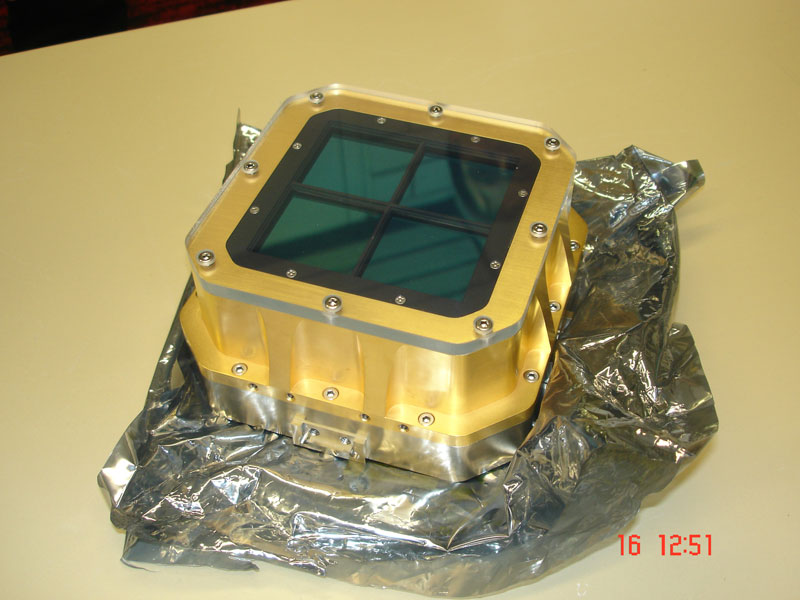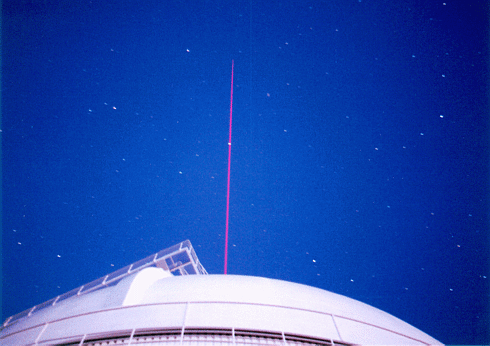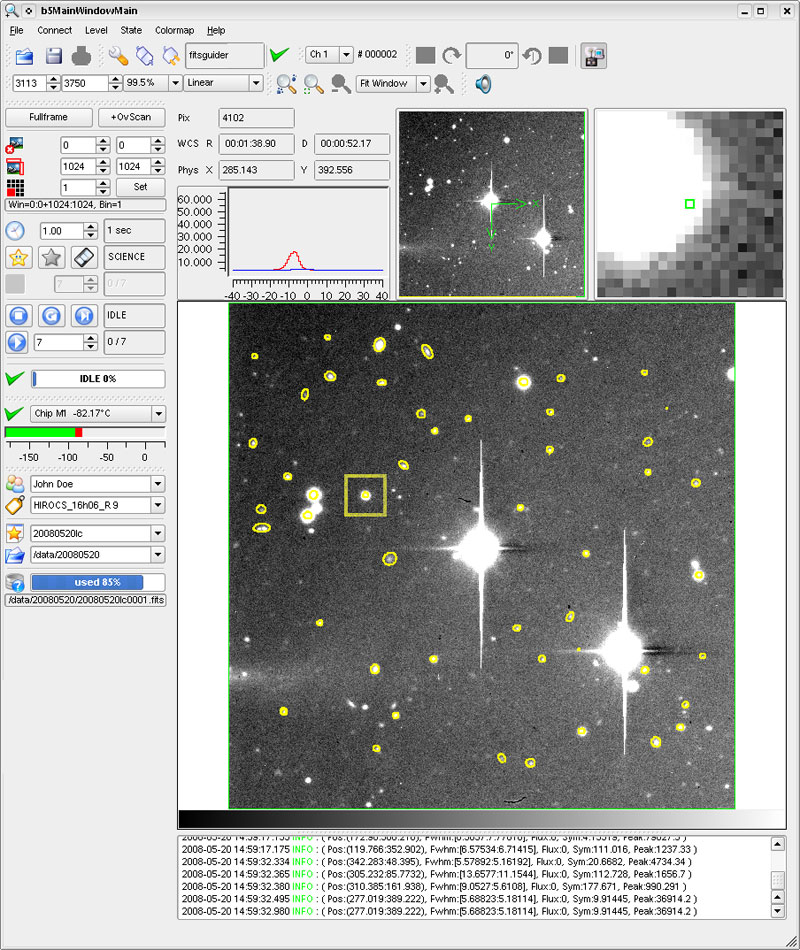| Version 134 (modified by , 8 years ago) (diff) |
|---|
The AstroTechTalk (ger) offers a place to discuss, for all interested colleagues and especially for the technical departments, the project leaders, the administration and the scientists as the ultimately users:
- status of instrumentation projects
- scientific tasks and features of the instruments in construction or planned
- new possible involvements
- technical innovations and developments
- technical problems and their solutions
- logistical problems and their solutions
- how to improve operation and observation
- project standards.
Time: Always Fridays 11:00 - 12:00
Location: Hörsaal
Outline:
- Announcements (news, visitors, etc.) (mainly in German)
- Talk of about 30 min about a selected topic (German or English, will be announced)
- Follow up discussion and questions (German or English, depending on the speaker)
Please send proposals for talks via e-mail to: gaessler, hofferbert - or also available in room 021 or 211.
| Date | Speaker | Topic |
| 18.09.2015 | Martin Kuerster | How big is the universe? Most astronomers believe that the size of the universe is infinite. But how certain can we be about this? When trying to answer this question we attempt to make a statement about the world as a whole, about the biggest entity that we can imagine. This can only succeed, if we can assume that the behaviour of the universe at large equals the behaviour that we know from our cosmic neighbourhood and that it also was the same at earlier times. This means that the same laws of nature must be valid at any time and everywhere, which cannot be taken for granted. A journey to increasingly larger distances and earlier times will provide an overview of the known universe. The talk will outline the way astronomers measure distances in the universe. Starting off from its origin in the extreme physical state that we call "big bang" the evolution of the universe will be illustrated. Presentation: German Slides: German Questions: German, English |
| 25.09.2015 | Markus Feldt | SPHERE - Lessons learned This talk discusses some of the project-related findings, which emerged during design, construction and commissioning of the SPHERE instrument. Rather than presenting the usual summary of successfully accomplished milestones, the focus is more on failures during project execution. But also correctly implemented things help to learn for the future... Mainly the MPIA contributions will be handled (data reduction software, ADCs, detector positioning unit) extended by some analyses of the overall project execution. Markus Feldt will very briefly also address the loss of the competition phase during the pre-SPHERE period. For sure, some of the findings are not new and some of the failures were repeated from other projects. For some of the undesirable developments there are no easy solutions - often the opinions of how to tackle a problem are controversial. This makes the communication of possible root causes of nasty errors even more important and helps to find corrective actions and countermeasures. Presentation: German Slides: German Questions: German, English |
| 02.10.2015 | Kai Noeske | The history of light in the universe Nearly all visible light is created in the outer layer of stars. Therefore, the visible light of the universe explains the history of a star and when it was born. We will learn how the birth of stars is connected with large structures of matter and the galaxies. The understanding of the history and the birth of stars plays a key role in understanding the universe and its evolution. This knowledge explains the assembly of structure in dark matter, tells us about physics behind the birth of stars and gas in galaxies and helps to understand the creation of heavy chemical elements, which finally lead to the generation of earth like planets and the live on it. As of late, the history of stars can be observed with large telescopes from ground and space up to more than 12 billion years into the past and in short even to a 100 million years after the big bang. These observations are accompanied by enormous computer simulations to understand the physics in the stars and in the Galaxies better and better. Presentation: German Slides: English Part1 Part2 Questions: German, English |
| 09.10.2015 | Coryn Bailer-Jones | Astronomical threats to the Earth In this short non-technical talk, Coryn Bailer-Jones will give an overview of some of the astronomical phenomena which can have an impact on the Earth, focusing in particular on asteroid and comet impacts. Presentation: German Slides: English Questions: German, English |
| 16.10.2015 | Klaus Jaeger | Hunting for light - How astronomers obtain their phantastic images Have you ever tried to take a photo of the night sky? Would you like to take pictures that capture a bit of the aesthetics with which astronomical images inspire us? Special tricks, experience, and the consideration of a few physical facts make it possible to do this even with simple equipment. But how do astronomers obtain their phantastic images? Besides the beauty of these images it's actually about something much more important: the sophisticated analysis of the data and the hunt for amzing insights into the universe. Using impressive examples Klaus Jäger will explain the exciting path that leads from a simple sky photo to professional images of the most distant galaxies at the edge of the observable universe - and at the edge of the technically feasible. Presentation: German Slides: English Questions: German, English |
| 23.10.2015 | -- | No talk |
| 30.10.2015 | Dr. med. Joerg Hoffmann | Our institute's work doctor talks (once more) about "Medical aspects of stay at high altitude (VLT, LBT, etc.)" and "Prevention and vaccinations when traveling abroad" Presentation: German Slides: German Questions: German, English |
| 06.11.2015 | Klaus Meisenheimer | PANIC works - Lesson (still to be) learned Exactly one year ago, on November 6th 2014, PANIC saw its first light. After the accident in March 2015 and the subsequent repair, PANIC is successfully back in operation since June 1st 2015 ("second light"). Klaus Meisenheimer will briefly shed light on the developments before first light, before putting the focus on the experience gained since June 2015. In summary, this talk will give a status report of PANIC's hard- and software, plus support and instructions for astronomical users. Presentation: German Slides: English Questions: German, English |
| 13.11.2015 | Joerg-Uwe Pott | MICADO |
| 20.11.2015 | Diethard Peter | Hologramms and their use |
| 27.11.2015 | Natalie Fischer | Planetarium show, Haus der Astronomie |
| 04.12.2015 | Dietrich Lemke | Dark lines in the spectrum of the sun 200 years ago, Joseph Fraunhofer discovered the dark lines in the spectrum of the sun and other stars during his stay in Benediktbeuern Abbey. Henceforth, he made use of them in manufacturing better lenses for his famous refractive telescopes. Only forty years later, Robert Bunsen and Gustav Kirchhoff, both in Heidelberg, revealed the physical nature of the Fraunhofer lines as the finger prints of the chemical elements in the sun. During the same time, the red or blue shift of those lines as caused by the movement of cosmic sources away from or towards us by the effect named after Christian Doppler has been discovered. This initiated the astrophysical conquest of the Universe, which is the basis of our modern view of the world. Please join Dietrich Lemke on a historical journey (also) to the origins of principal astronomical techniques. Presentation: German Slides: German Questions: German, English |
| 11.12.2015 | -- | Christmas party |
| 18.12.2015 | still vacant | |
| 25.12.2015 | -- | Christmas |
Preview:
--
Postview:
Attachments (11)
- instrum8_gr.jpg (82.6 KB) - added by 10 years ago.
- instrum4_gr.jpg (104.4 KB) - added by 10 years ago.
- pedv3_gr.jpg (213.9 KB) - added by 10 years ago.
- alfa3.5.gif (235.6 KB) - added by 10 years ago.
- CIAO.jpg (3.8 MB) - added by 8 years ago.
- linc_nirvana_labor.jpg (255.2 KB) - added by 8 years ago.
- MATISSE.jpg (43.1 KB) - added by 8 years ago.
- miri_fm_filterwheel.jpg (145.6 KB) - added by 8 years ago.
- PACS-Chopper.jpg (80.0 KB) - added by 8 years ago.
- simple_loop.gif (965.4 KB) - added by 8 years ago.
- teaser.jpg (13.5 KB) - added by 8 years ago.
Download all attachments as: .zip




